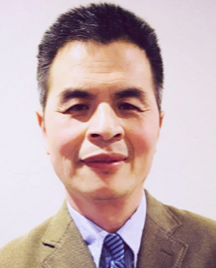Advancing Alzheimer's Disease Treatment With An OLE, Expanded Access, & A Better Patient Experience
A conversation with TrueBinding CEO Dongxu Sun, Ph.D.

First discovered nearly 125 years ago, and still without a cure, Alzheimer’s disease continues to affect the lives of more than 6 million Americans and is also the country’s sixth leading cause of death. Several treatments have been introduced to mitigate the symptoms of the disease and even slow its progression, but a cure has not yet been found.
In recent months, several advancements have been made in Alzheimer’s disease drug development and clinical research, including the FDA approval of lecanemab, a study in Nature Medicine that found a combination of verubecestat and gantenerumab slowed progression by 30%, and a study published in Science that showcased a tau stabilizer that prevented the formation of tau tangles in a clinical trial. In addition, TrueBinding has developed a humanized monoclonal antibody to treat Alzheimer's disease by binding to and blocking Galectin-3, a protein that causes amyloid beta (Abeta) oligomerization and plaque formation.
After the recent developments, we caught up with Dongxu Sun, Ph.D., TrueBinding’s CEO, to discuss the latest in the journey toward an Alzheimer’s disease drug that reduces symptoms and reverses them, too, with minimal side effects.
Around the same time we learned that lecanemab — the leading Alzheimer’s disease drug candidate from Biogen and Esai — has not yet shown a “net health benefit,” TrueBinding posted positive early results from its open label extension (OLE) study of TB006. To start, how is TB006 different from existing therapies? And what has the TB006 preliminary trial data shown?
SUN: Lecanemab, along with aducanumab and most other investigational treatments for Alzheimer’s disease, is a human monoclonal antibody that specifically targets amyloid beta. Data from Phase 3 studies with these antibodies indicate that they are effective in blocking further production of amyloid, and in fact, reduce existing amyloid plaques. But their impact in slowing the progression of the disease, as measured by standard clinical staging, the CDR-SB, is marginal at best, even in studies lasting 18 to 24 months.
In TB006 on the other hand, the galectin-3 blocking mechanism targets not only amyloid beta but also other toxic precursor proteins like tau, alpha-synuclein, and APOe4, all of which are important in the pathology of Alzheimer’s disease. In addition, TB006 blocks inflammation, which also plays a significant role in the pathology of Alzheimer’s disease.
Another key difference between TB006 and other Alzheimer’s disease candidate drugs is in study design. The anti-amyloid treatment studies, like those for lecanemab, are restricted to a mild cognitive impairment (MCI)/early Alzheimer’s disease patient population. TB006 targets symptomatic patients with mild, moderate, or severe Alzheimer’s disease, all areas with high unmet medical need.
Preliminary data from our one-month study — which included patients both with and without evidence of amyloid plaques— showed a difference vs. placebo of .44 points, or a reduction of 63%. These results were similar among both amyloid positive and amyloid negative patients. This is nearly the same difference as was demonstrated with lecanemab after 18 months of treatment. If we extrapolate our results over a longer treatment course, we expect to see greater differences vs. placebo on the CDR-SB than was demonstrated by lecanemab or aducanumab.
Phase 2a clinical trials results determined that TB006 “improved cognition and function in study participants with moderate to severe Alzheimer’s disease with little to no side effects.” Shortly after, the team decided to pursue the OLE study. Tell us about that decision-making process and how it happened.
SUN: In our Phase 1b/2a studies, we were treating patients over the course of one month, and the outcomes indicated that TB006 has a strong potential for the reversal of Alzheimer’s in moderate to severe cases. Despite the positive outcomes, we wanted to see the toxicology coverage for a longer period of time because Alzheimer’s disease is a chronic condition, and some patients may need longer periods of treatment in order to see realized benefits. The data generated during the trial was so exciting it gave us greater confidence to pursue the longer studies we already had in development, and that’s the purpose of the OLE study. As is the case with TB006, OLE studies are typically offered after a blind clinical trial is complete if the clinical trial showed potential benefits for patients. We were fairly confident that our clinical trials would have positive results, and decided early on to offer the OLE study as a patient incentive to first participate in the double-blind study. The goal of the OLE is to collect safety data and descriptive efficacy data, both of which we are already seeing, and the results continue to be encouraging.
Positive results came not only from trial data but also through testimonials given by providers, patients, and caregivers, and they are published on your website. Patient centricity is a must nowadays, but keeping the patient as the focus requires a conscious and concerted effort. What does TrueBinding do to keep the patient’s experience in mind — from drug development to (hopefully) commercialization?
SUN: Patient experience is critical at every stage of clinical development, and we take it very seriously. How someone feels in the clinic can impact not only their experience, but possibly their outcomes. From our interactions with investigators and staff members to other patients and their caregivers, each of our patients embraces the process of attending the clinic and receiving a prospective treatment.
During the OLE study, for example, we’ve been receiving anecdotal reports from patients and their caregivers, and we respond to them. These are not just patients with anonymized numbers. They are real people who are scared and stressed, and they have caregivers and family members who feel the same. Being responsive has created a community of caring and information-sharing that is also an important part of the healing process. That degree of interaction isn’t possible in blind trials but providing care and support in a humane and empathetic way is always possible, and it is at the core of what we are working to do.
In terms of the medicine, the infusion is very well tolerated, and the entire process of participating in the clinical trial seems to be a pleasant experience for them. There have been no emerging safety issues, and patients relish the attention they receive. In our studies, we are looking for improvement in cognition and daily function, and often, it’s the people surrounding the patients, like their caregivers and family members, who see the difference first and to what degree. A scale might tell us that a patient has gained or lost weight, but self-reporting or family reporting on things like, “Mom was previously only remembering to eat breakfast, but for the past two weeks has eaten three meals per day without prompting,” can tell us quite a lot more about how they are faring. By running on a premise of transparency and open communication, we’ve found that the clinical benefits patients experience are clear given improved cognition and enhanced daily function.
Taking a step back, patient recruitment can be an insurmountable hurdle for sponsors seeking participants in their clinical trials. But when it comes to TB006, TrueBinding decided to allow the enrollment of patients of all ages and with certain comorbidities, like diabetes, hypertension, and cerebrovascular disease, which can sometimes exclude patients from participation. How does TrueBinding approach the development of inclusion/exclusion criteria in its effort to reach successful enrollment numbers?
SUN: Comorbidities like diabetes, hypertension, and cerebrovascular disease are often excluded from clinical trials because they can confound the safety interpretation of the investigational treatment. Our approach has been that if these comorbidities are treated and well-controlled, we can accept the patient. We are confident in our safety profile and we believe that if comorbidity events occur, there will be a similar ratio between the active and placebo groups.
Aside from comorbidities reducing the patient pool, one of the major recruitment hurdles for Alzheimer’s disease drug trials is identifying amyloid positive patients. Trials that require patients to be amyloid positive can have screening failure rates of between 80 and 90 percent. That’s because most trials are working towards treatments for those with early to moderate Alzheimer’s and amyloid plaques are not always present at these stages of the disease, or at all. Importantly, amyloid plaques are also not the only factor; as we’ve found while researching TB006, the Galectin-3 protein plays a pivotal role in the onset and progression of dementia. Because of the mechanism of action in TB006, which targets Galectin-3 we, believe that it will be effective in both amyloid positive and amyloid negative patients, so we don’t face that hurdle.
Along those lines, TrueBinding is seeking FDA expanded access for TB006 to bring it to patients as soon as possible. How did you arrive at the decision to seek expanded access, or compassionate care, and what steps were taken to gain access to the program?
SUN: We wanted to make TB006 accessible to symptomatic patients who aren’t receiving adequate treatment with their current medications and are also not able to participate in a clinical trial. Many of these patients who have no hope for treatment are living out their remaining days with little or no quality of life. This decision was simply about doing what’s right and being compassionate to those who are suffering. Since March 2023, we’ve been preparing our application for submission to the FDA in early June. Hopefully, one month later, we will have approval, and patients will be able to access our treatment through their doctors.
About The Expert:

Dongxu Sun, Ph.D., is an expert in the development of novel treatments for difficult-to-treat diseases, particularly those with unmet needs, and most recently Alzheimer’s disease. After obtaining his Ph.D. from the University of Minnesota-Twin Cities, Sun discovered new signal transduction pathways for inflammatory and autoimmune diseases first as a researcher at Cornell University Medical College and then Cleveland Clinic. He later led the discovery of novel checkpoint regulators to develop immunotherapy drugs for cancer and autoimmune diseases while at Immunext.
In 2016, Sun founded TrueBinding, Inc. with a mission to discover novel drug targets. Working with a team of multidisciplinary scientists, Sun is now developing monoclonal antibody drug candidates targeting novel pathogenic factors for Alzheimer’s disease and other conditions.
Today, Sun is focused on the development of TB006, a new treatment for Alzheimer’s disease that has been shown so far in preclinical and clinical trials to not only reduce the symptoms of Alzheimer’s disease, but also to reverse them, and with minimal side effects.
